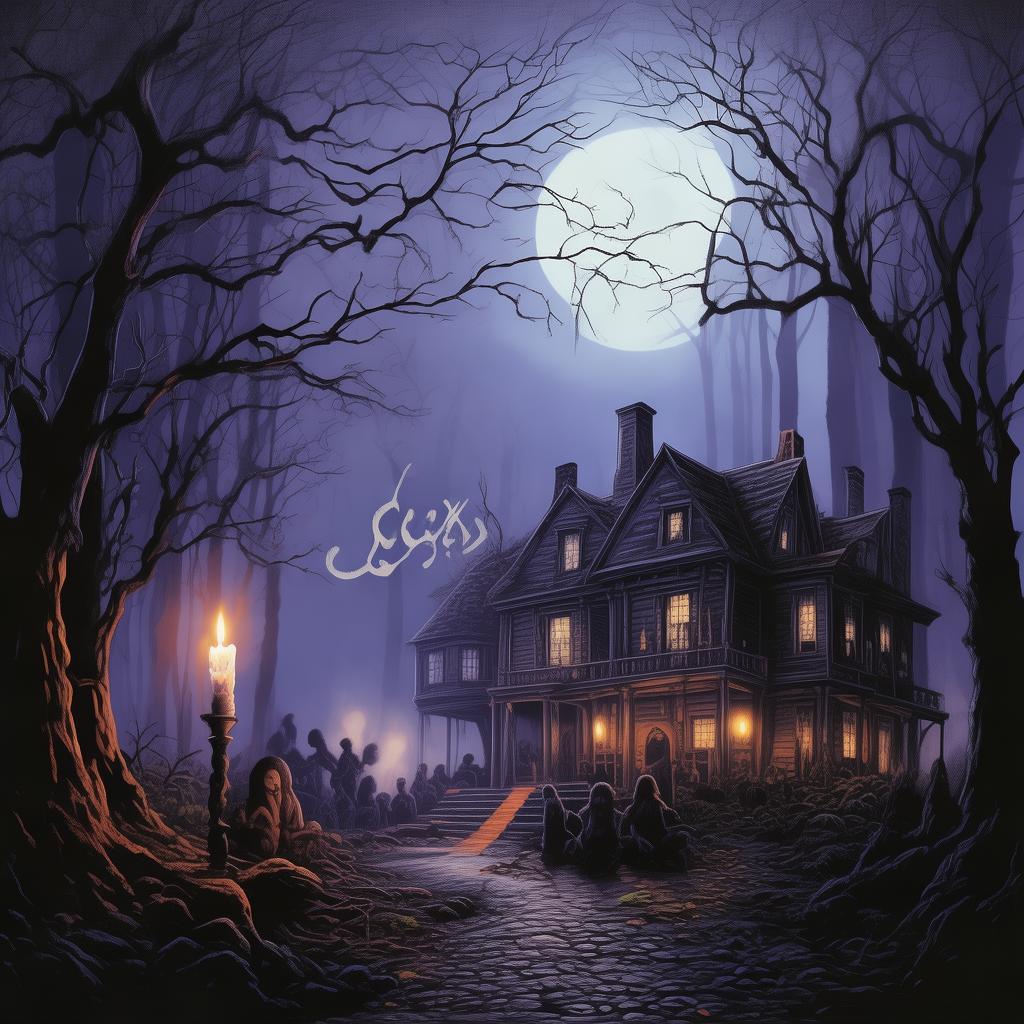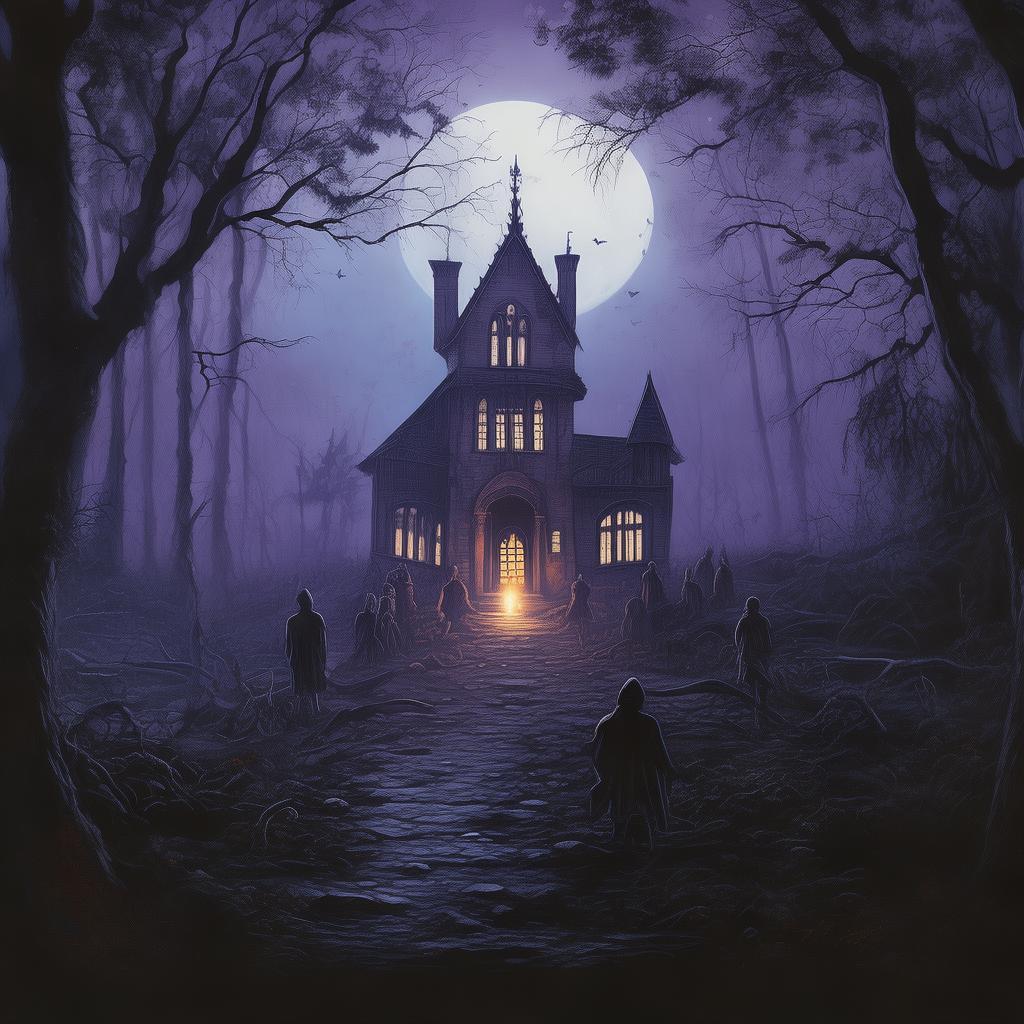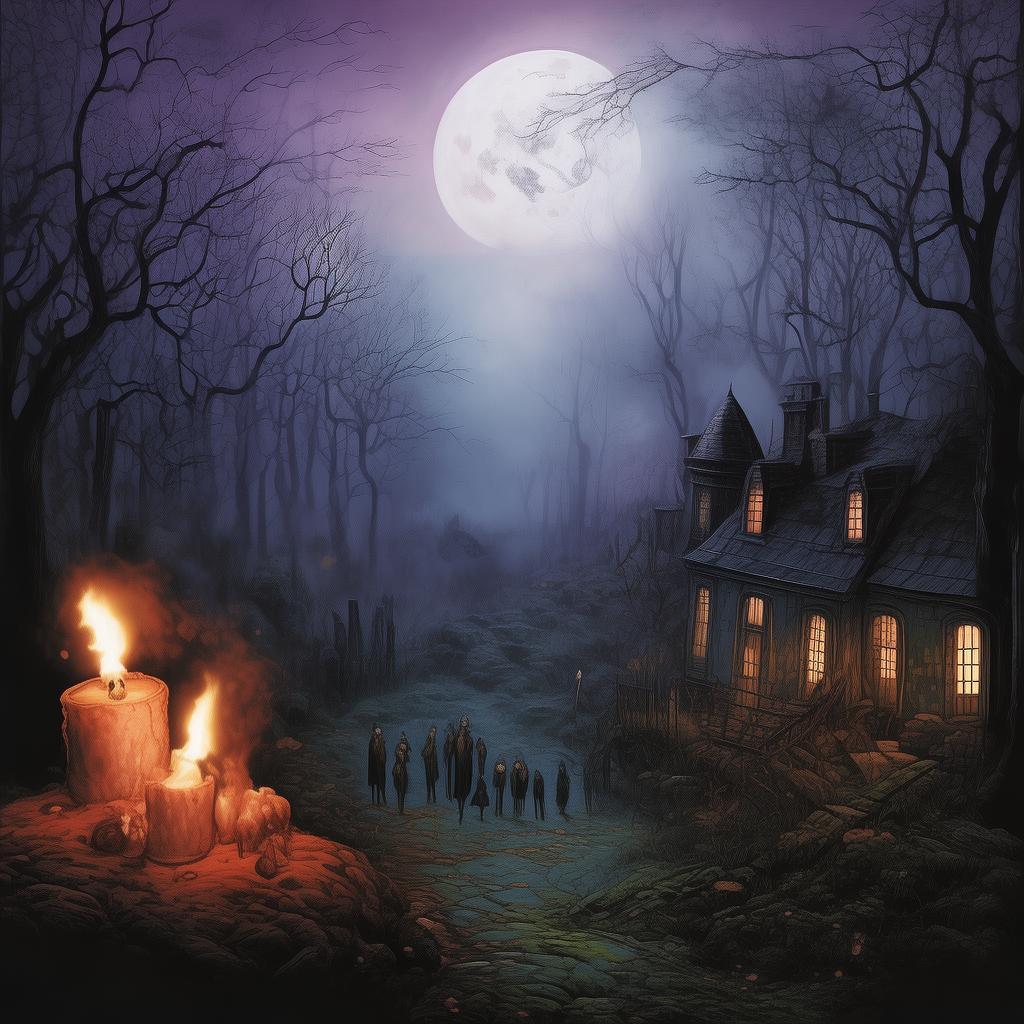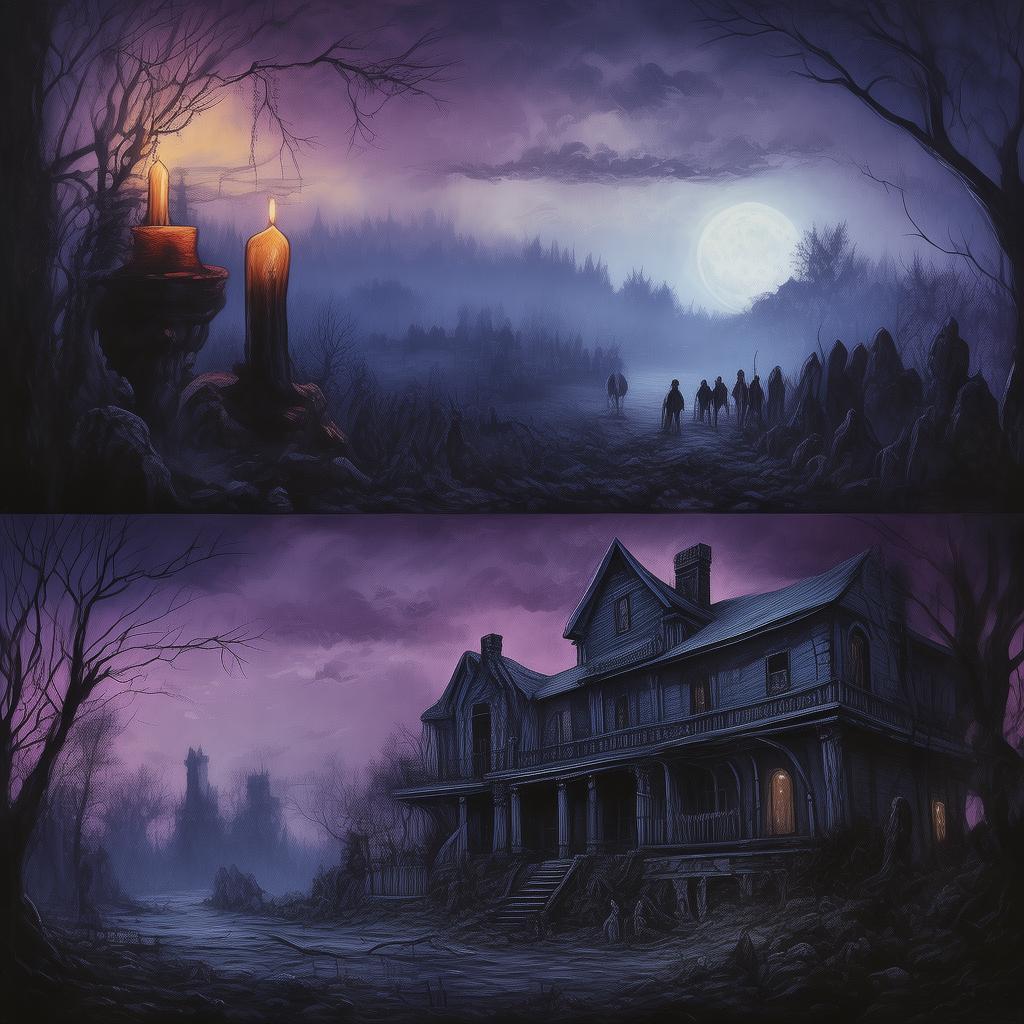The Vanishing Seamstress in the Attic
The sun had barely risen, casting long shadows that danced with the early morning light. In the quiet, oppressive silence of the old mansion, the air seemed thick with secrets and the faintest whispers of the past. The attic, once a place of refuge, had become a mausoleum of forgotten memories, its cold, wooden beams creaking under the weight of untold stories.
It was on such a crisp autumn morning that the discovery was made. The mansion's current inhabitants, the elderly Mrs. Whitmore and her reclusive daughter, Penelope, were the last to use the attic. They had been cleaning out the old, dusty attic, a task that had been long overdue, when they stumbled upon something they couldn't ignore.

Penelope, with her curious eyes and a heart that longed for the mysteries of the past, had been the one to find it. Tucked away in the darkest corner of the attic, hidden behind a thick layer of dust and cobwebs, was a small, ornate trunk. The wood was worn, its surface etched with intricate designs, and a single, delicate key dangled from its lock.
Mrs. Whitmore, wary of the attic's eerie aura, had hesitated, but Penelope's excitement was contagious. With trembling hands, Penelope turned the key, and the lock clicked open. Inside, amidst a sea of faded fabrics and threadbare remnants of old clothing, lay a lifeless body. It was a woman, dressed in period-appropriate attire, her face pale and expression serene. But what made her death doubly mysterious was the absence of any sign of struggle or violence. It was as if she had simply... vanished.
Word of the discovery spread like wildfire through the small town, and soon, the Whitmore mansion was the subject of whispered conversations and speculative looks. The local police were called, and an investigation was launched. But despite the thorough search, there was no sign of a body. The woman, whose name was never found, seemed to have disappeared without a trace, leaving behind only the cold, empty trunk and the haunting mystery of her death.
As the days passed, strange occurrences began to unfold. The family heard faint, ghostly whispers coming from the attic, as if the woman's spirit was trapped within the walls. At night, Penelope would awake to the sound of sewing machines clacking, the hum of old, forgotten dreams. The woman's hands, with their nimble, deft movements, seemed to weave through the air, her voice a soft, melodic lullaby that turned to a chilling screech at the worst possible moment.
Mrs. Whitmore, a woman of faith, tried to comfort Penelope by suggesting the woman was simply a ghost, a spirit seeking peace. But Penelope, who had always had a sensitive soul, knew better. She felt the woman's presence, felt her pain, and understood that this was more than just a ghostly apparition. The woman, she felt, was a soul trapped, yearning for answers.
The story of the vanishing seamstress in the attic grew, intertwining with the dark history of the mansion. It was said that the mansion was built on the site of an old textile mill, a place where workers had perished under tragic circumstances. The woman, perhaps, was one of those workers, her spirit bound to the attic by some twisted thread of fate.
Penelope, driven by her determination to uncover the truth, began her own investigation. She spoke to the townspeople, piecing together the history of the mansion and the woman's life. She discovered that the woman, known to her friends and family as Elspeth, had been a brilliant seamstress, a master of her craft. She had a heart full of dreams, but those dreams were cut short by a tragedy that had yet to be revealed.
Penelope's quest led her to a hidden journal, buried deep within the attic. The journal, filled with delicate penmanship and poignant stories, painted a picture of a woman whose life had been fraught with heartache. Elspeth had loved deeply, but her love had been met with betrayal. She had been betrayed by the very man she had trusted with her heart, and in a fit of despair, she had taken her own life.
The revelation came as a shock, but it also brought a sense of closure. Penelope understood that Elspeth's spirit was bound to the attic, not by malevolence, but by her own need for resolution. She needed to know that her life had mattered, that her love had been worth something.
Penelope, with the help of her grandmother, began to create a dress, a beautiful, intricate gown that was Elspeth's dream. They worked through the night, the sound of the sewing machines a comforting backdrop to their shared grief. When the dress was finally complete, Penelope laid it on the bed where Elspeth had been found.
With a deep breath, Penelope spoke to Elspeth, sharing the story of her life, her love, and her dreams. She spoke of the betrayal, the pain, and the beauty that had still been present in Elspeth's life. And then, with a silent prayer, Penelope opened the attic door, the light of day flooding the room.
Elspeth's spirit seemed to surge, as if being freed by the act of love and closure. The whispers grew louder, the screeches turned to soft sighs, and then, suddenly, Elspeth was gone. The spirit had been released, the thread had been cut, and Penelope knew that her grandmother had been right; Elspeth was at peace.
The mansion, once a place of darkness and mystery, seemed to breathe a sigh of relief. The air was no longer thick with secrets and fear, but with a sense of release and the knowledge that the past had been laid to rest. The Whitmore family, though still haunted by the memories of the attic, had found a new beginning, one that was not bound by the past but instead was filled with hope and the promise of new dreams.
The vanishing seamstress in the attic had left behind a legacy of love and loss, but her story had also shown that even in the darkest of places, there could be light, and even in the most tragic of tales, there could be hope.
✨ Original Statement ✨
All articles published on this website (including but not limited to text, images, videos, and other content) are original or authorized for reposting and are protected by relevant laws. Without the explicit written permission of this website, no individual or organization may copy, modify, repost, or use the content for commercial purposes.
If you need to quote or cooperate, please contact this site for authorization. We reserve the right to pursue legal responsibility for any unauthorized use.
Hereby declared.









